I recently attended a wonderful kettlebell instruction class put on by the folks at Ice Chamber Gym in the Bay Area.
This course was taught by none other than my boi Jimmy Yuan (who teaches every class ever, an incredibly sharp cat), my new boi Steven Khuong (the cat behind Ice Chamber), and Jen Cord (a freaky good kettlebell athlete).
This course compared and contrasted the two most popular styles of kettlebell training: Hardstyle and Girevoy Sport (GS), teaching how to perform movements within each technique.
I am familiar with some of the Hardstyle methods, but never even heard of GS. Attempting the movements were a little, ahem, awkward for me, but I found this style of training to be quite rewarding.
All of the instructors were excellent at their craft, and I definitely learned some great technical tips to performing many of the kettlebell movements. Take a class from these peeps has my strongest recommendation.
Go ahead and check out the video review below, then get into them notes to get your learn on.
A pre-apology, I’m still learning some of the moves, so my technique is not perfect. I tried to use videos from the class itself (Kudos to Ice Chamber to letting me use), but unfortunately I did not film in landscape mode. Fam ain’t perfect (but close).
Table of Contents
Hardstyle vs Girevoy Sport
Though both hardstyle and Girevoy sport share many movements, there are some key differences between the two approaches; much like two different martial arts.
Let’s dive into what makes these methods unique.
Hardstyle Kettlebell
Hardstyle is all about producing maximal power, generating tension, and resisting the kettlebell. The hinge is key to demonstrating these qualities.
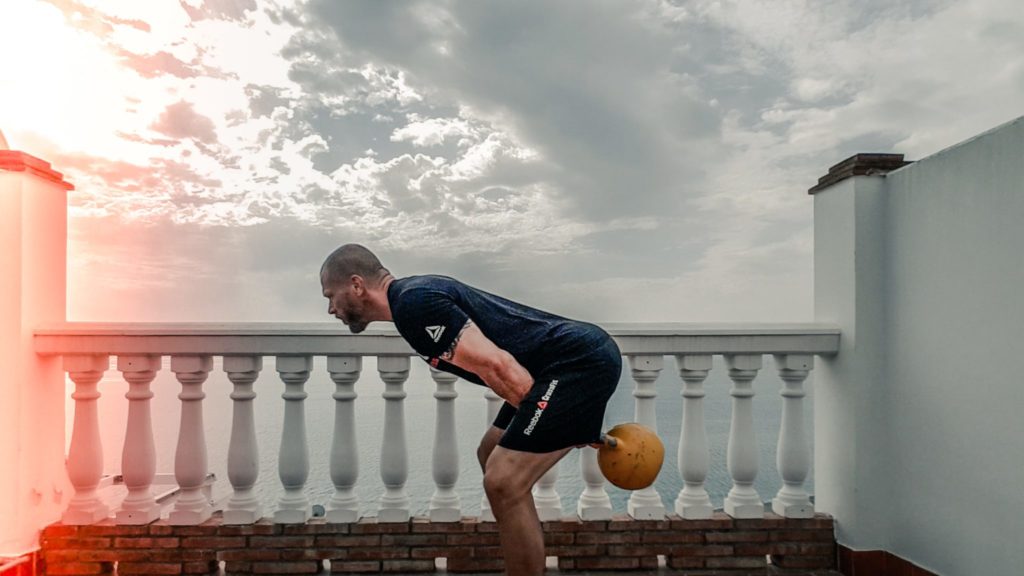
The hip hinge propels the kettlebell into the desired position, and allows the body the finish in a stable “plank” position at the top. This arc creates a relative forward trajectory of the bell, to which the body attempts to resist by rooting into the ground.
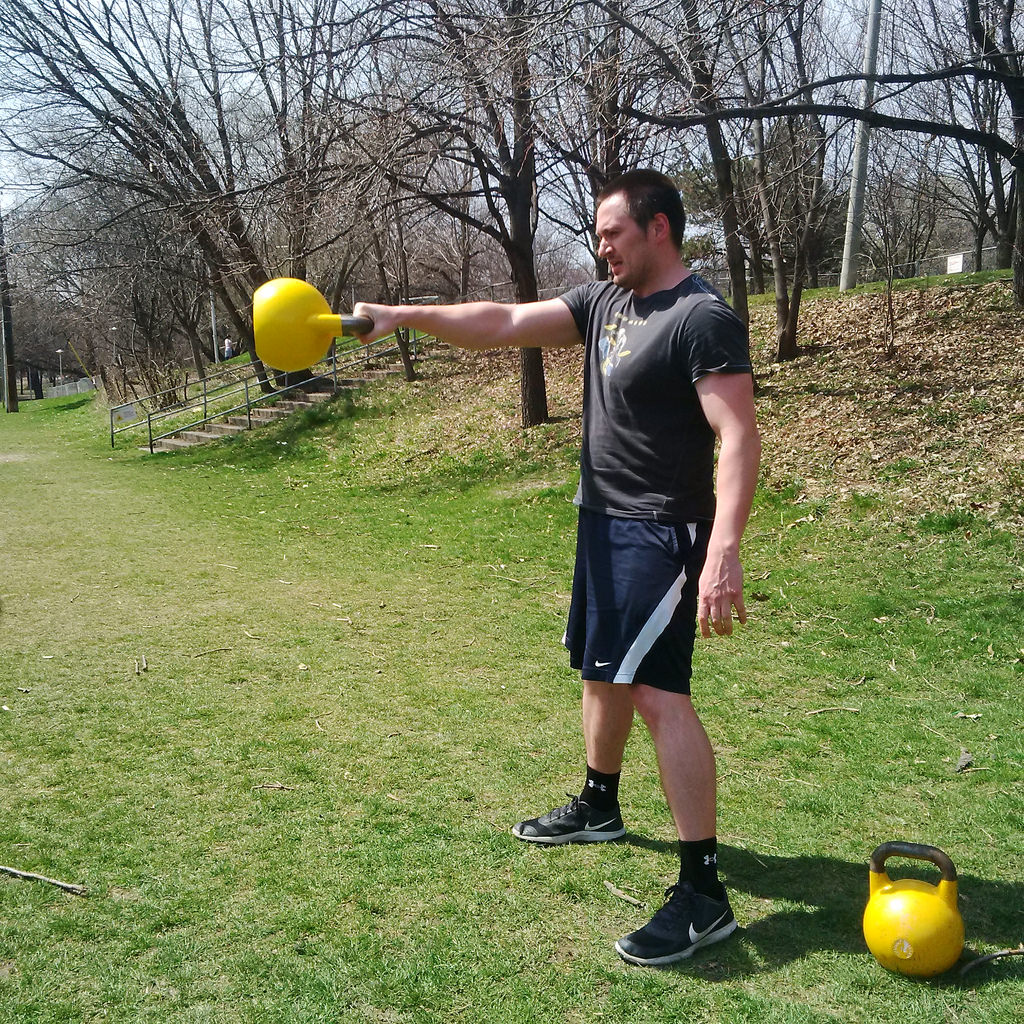
Hardstyle breathing is forceful to generate maximal tension. Exhales occur during the concentric, inhales during the eccentric.
The kettlebells are also shaped and sized differently pending the weight.
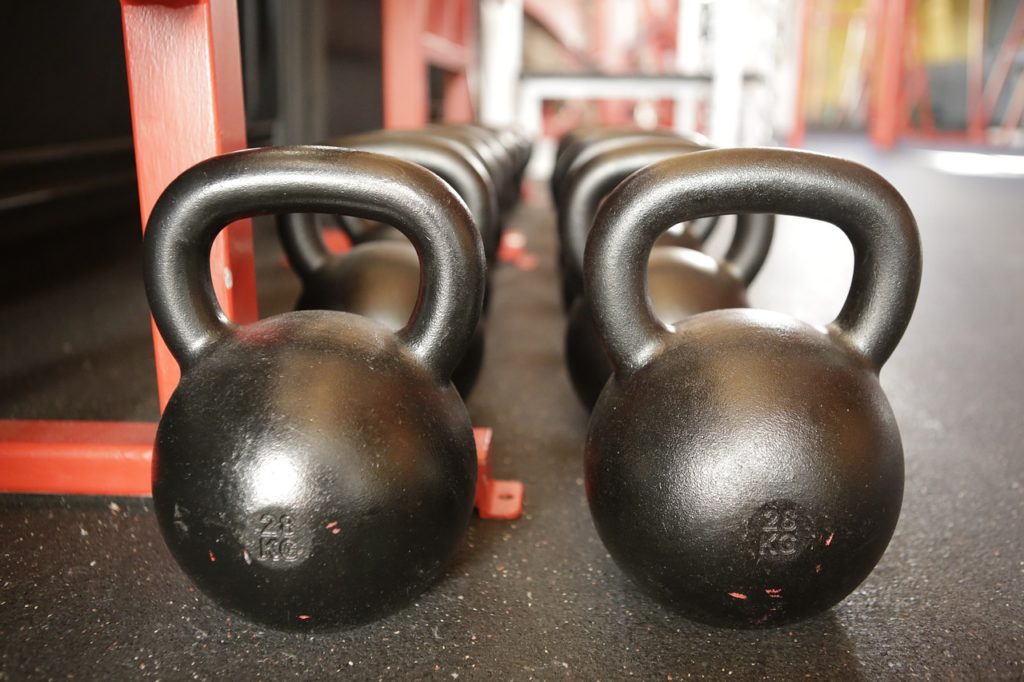
Girevoy Sport Kettlebell
Unlike hardstyle, Girevoy Sport (called GS by cool peeps) is a much more fluid style of kettlebell work. Instead of resisting the kettlebell, we are moving with its arc. Technique is more interpretive, dancy, and flow-like. The body creates space for the kettlebell to move around. Endurance and energy conservation is the name of the game.
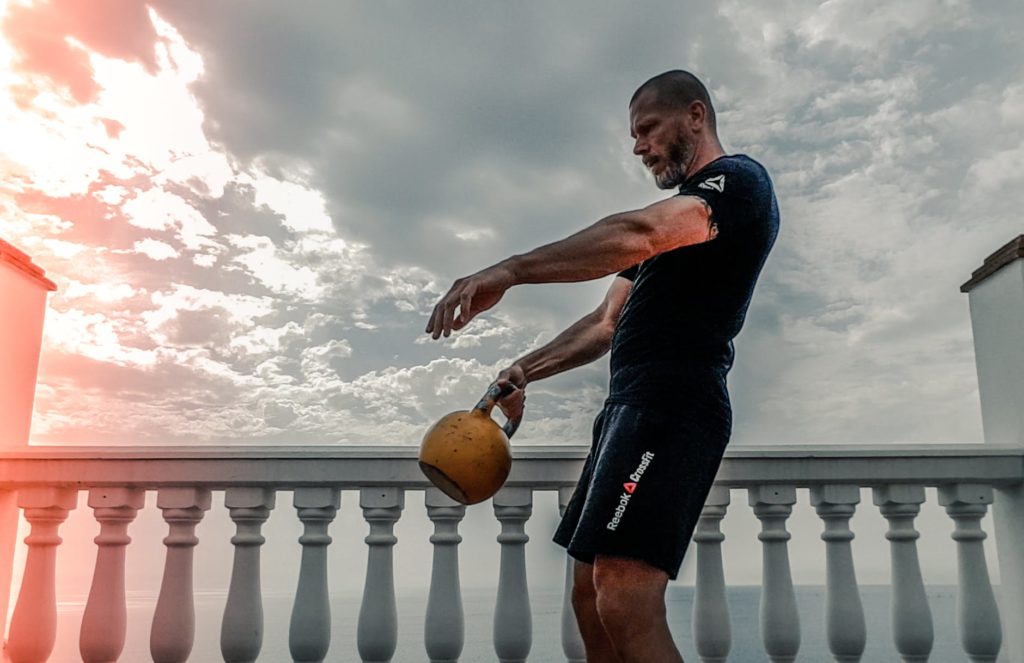
GS breathing is paced, chill, and easy. Exhales occur during the eccentric, inhales during the concentric.
The kettlebells are different than those championed with hardstyle. GS kettlebells are consistent in their handle structure despite differing weights, to maintain consistency with competition.
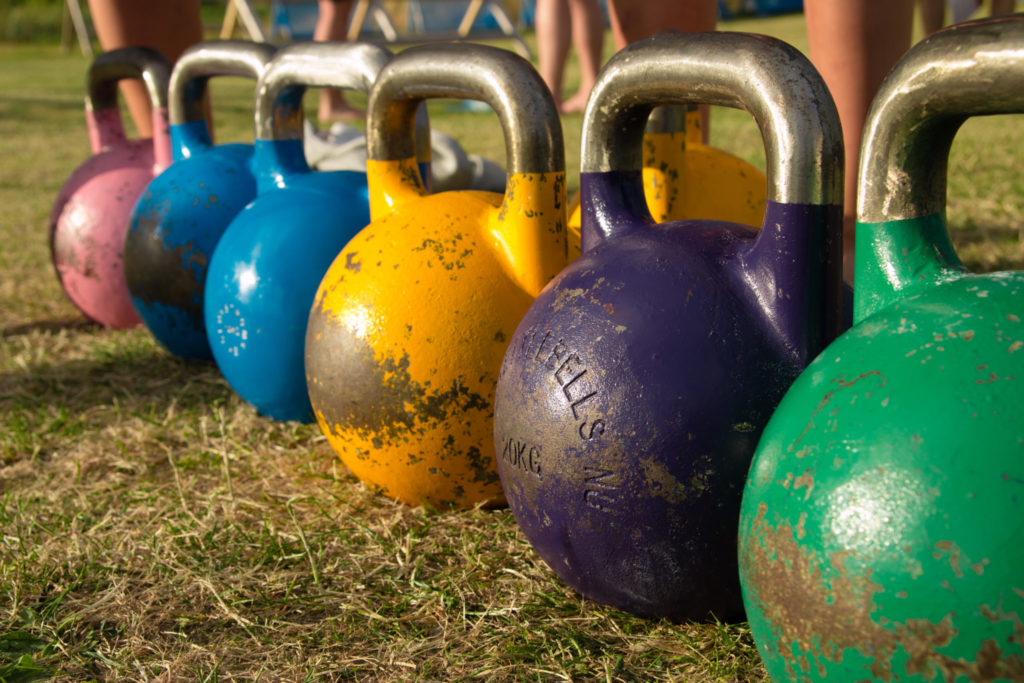
Now that we’ve given an overview of the two styles, let’s dive into the basic movements.
Kettlebell Swing
Arguably the most famous of all kettlebell moves, but did you know there are two ways to do it?
Let’s take a look.
Hardstyle Kettlebell Swing
As with all hardstyle maneuvers, the swing starts with a hip hinge action, creating an arc. As the bell passes underneath the legs, it ought to stay above the knees. Cueing hiking a football or attacking the zipper with the bell can ensure this pathway.
The intent of this arc is to project the bell forward, so the finish occurs with an upright, hard plank. The legs are rooted into the ground, and the person stands up tall to allow the leg drive to propel the bell forward.
Girevoy Sport Kettlebell Swing
Instead of hinging, the legs perform a rocking-horse maneuver; an alternation between bending and straightening the knees. This motion allows for upward projection of the kettlebell as the individual stands upright.
First, grip the bell with the thumb and index finger interlocking, making the OK symbol. Since GS swings are performed for time, we do not want grip fatigue to be a rate limiting step.
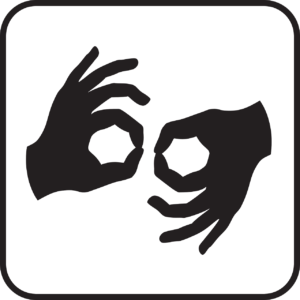
On the way down, the rocking-horse maneuver places the bell into the down position, but the bell still stays above the knees. While downswinging, the opposite arm sways backward, aiding in driving the kettlebell backward. Unlike in hardstyle, the feet can move into plantarflexion or dorsiflexion. Remember, the goal is to work with, not against the bell.
The way up involves reversing the rocking-horse maneuver, which shoots the kettlebell on its upward trajectory. The same-side arm is to not pull the kettlebell up, but the opposite arm can come almost across the body to enhance rotational torque to aid propulsion.
The GS swing is quite helpful at teaching both the hardstyle and GS snatch, because the angle at which the bell travels is similar in both maneuvers.
Kettlebell Clean
The kettlebell clean is typically a transitional maneuver, but a great activity unto itself.
The key differences between hardstyle and GS are in the swing and finishing spot.
Let’s look at each.
Hardstyle Kettlebell Clean
Components of the swing are still in place for the clean; namely the hinge and the plank finish. The key difference is the elbow position.
The elbow is essentially attached to the hip at all times, allowing for effective trajectory into the clean position.
As the bell ascends upward into the clean position, the forearm becomes perpendicular to the floor, and the bell rests into a pocket made by the chest and arm.
To drop the kettlebell back through the legs, the elbow stays locked to the hip while the kettlebell is dumped forward by the arm.
Girevoy Sport Clean
The clean utilizes many of the same components of the swing, with only a couple key differences.
The first difference is the grip. Instead of the OK grip utilized in the swing, a C-hook grip is used.
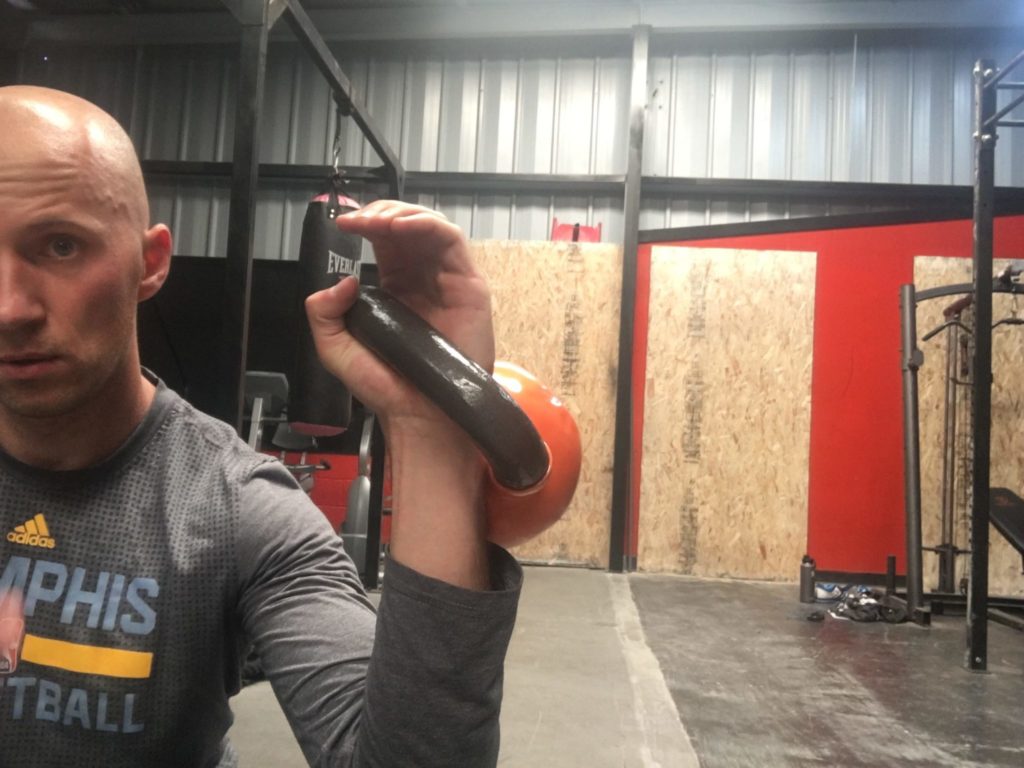
This particular grip involves creating a relaxed hand position for the bell to transition to between the top and bottom phases of the movement. Again, energy conservation is the goal, and we do not want grip fatigue to be the limiter.
The fingers in the above picture are used to hold the bell at the bottom position of the clean, and then at the top position the bell will rest in the web space. The bell makes an aerial transition between these two positions.
The rocking horse maneuver launches the kettlebell onto the chest, its resting position. To ensure that space between the wrist and kettlebell is minimized (aka closing the window), a knife chopping maneuver can be used to catch the bell. This is where the fingers are driven upward towards the ceiling in order to catch the bell.
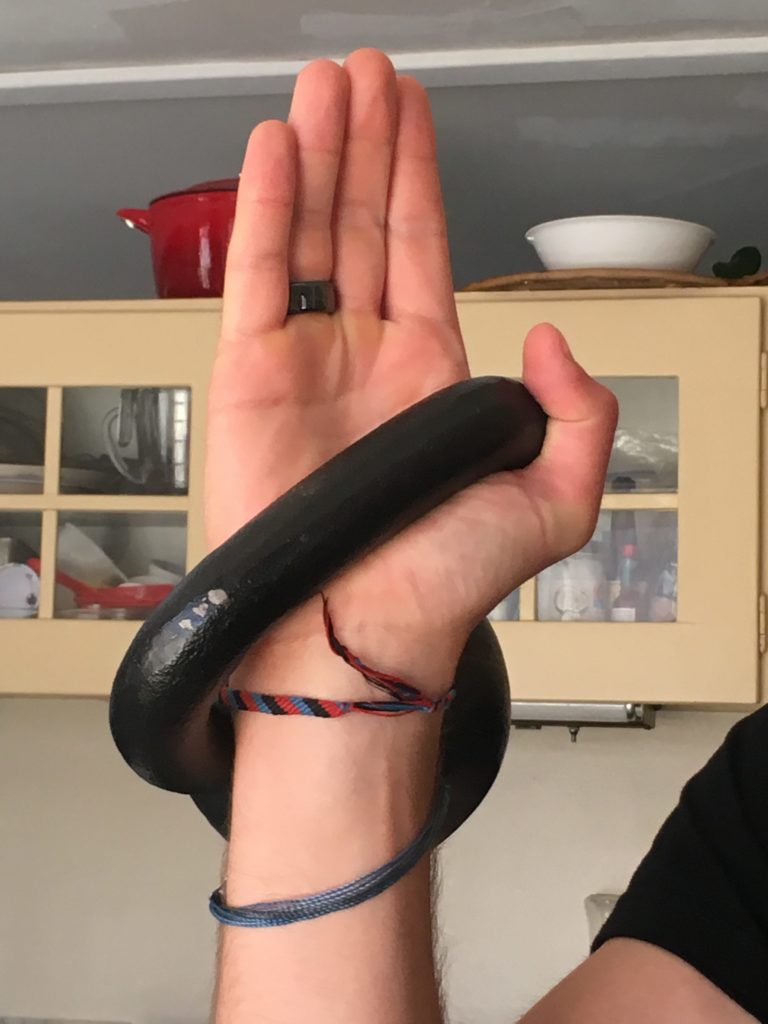
Upon landing, the elbow should be locked in and close to the body, which creates a pocket for the bell to sit in. Creating a “V”shape angle at the elbow allows the arm to rest atop the pelvis, to which the latter’s position is created via hip and knee extension.
We like to call this the “thugged out” position.
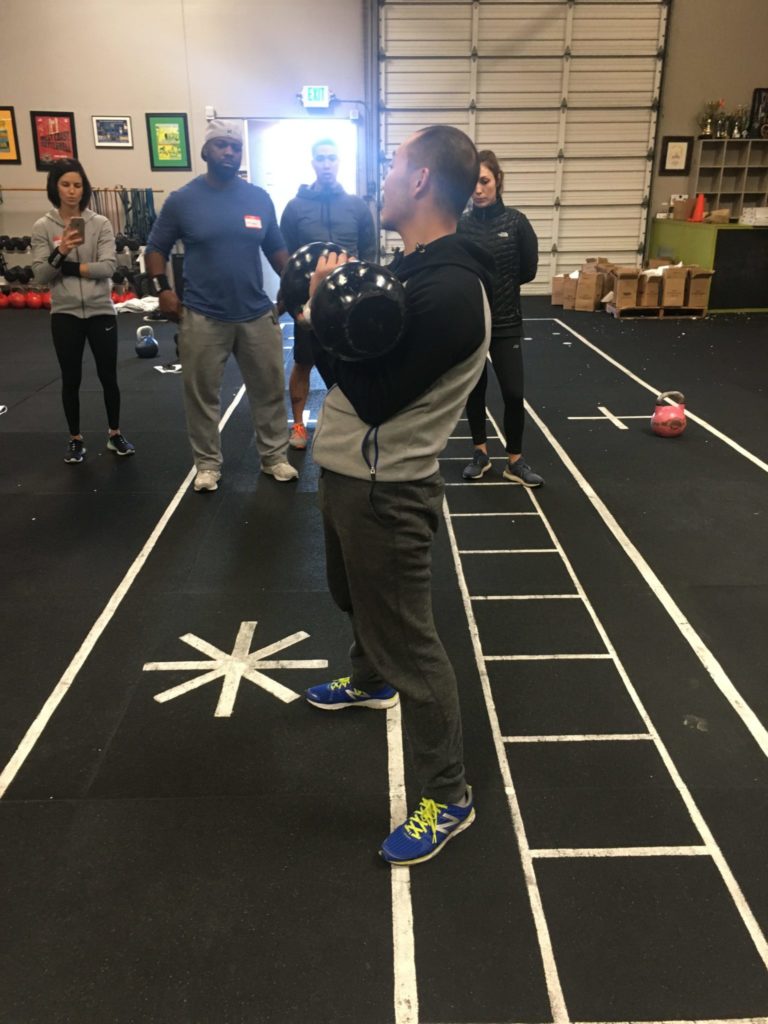
To put the bell back underneath the body, a slight dip is used to launch the kettlebell off the shoulder.
Here is what the clean looks like:
Kettlebell Presses and Jerks
Both Hardstyle and Girevoy sport have different maneuvers for sending the bell overhead.
Let’s take a look.
Hardstyle Kettlebell Press
The hardstyle method does not utilize a jerk as an overhead activity. Instead, a press and push press are championed.
As with the finish position of the clean, the forearm stays perpendicular to the ground. The kettlebell can either be held at the corner or the center, with the former being the more challenging position.
With the press, the arc of the bell ought to make a letter “J”. The fist can either be closed or open around the bell at the top position.
The push press is an easier variation than the strict press, simply because there is an element of leg drive and the center of mass is lower to ground in comparison.
Girevoy Sport Kettlebell Jerk
Out of the three pressing variations, the GS jerk is the easiest because the center of mass is even lower than the hardstyle overhead and push press. Instead of shoulder activity performing the motion, we are throwing the bell upward with the body. Typically, this maneuver is performed with two kettlebells.
First, refer to the clean portion of this post to get into the starting position. Since now two kettlebells are used, the bell handles ought to rest atop one another, essentially making them one implement.
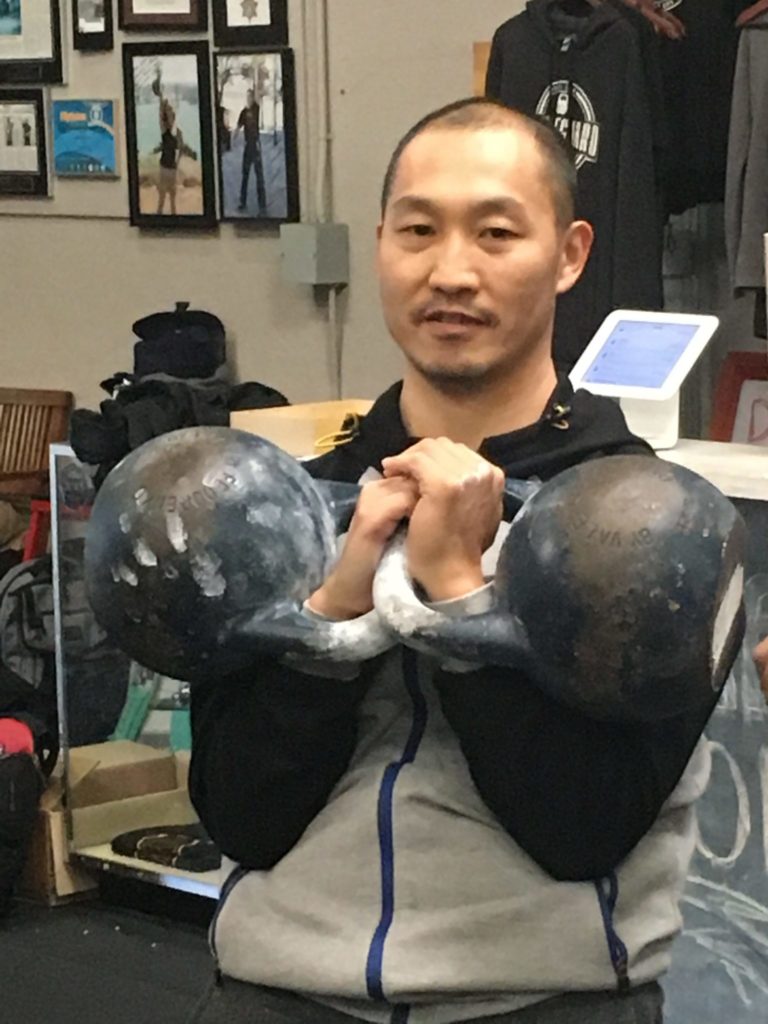
To jerk the weight overhead, a slight dip ought to occur to launch the bell. This dip must be low enough to allow for the kettlebells to be caught over the midline with the shoulders, elbows, and wrists fully extended.
Landing can occur in a split or two knee bend position, but the two-knee bend position is more often utilized.
Here is what the jerk alone looks like:
Here is what the whole sequence looks like with a clean and jerk:
Kettlebell Snatch
The snatch. The most technically demanding and beastly of the kettlebell maneuvers.
Here is a side-by-side comparison of the two snatches, with Jen on the left performing a GS style, and Jimmy on the right performing a Hardstyle snatch:
Let’s now dive into each.
Hardstyle Kettlebell Snatch
As with all hardstyle maneuvers, the snatch starts with a hinge and finishes with a plank hold.
As the kettlebell propels forward, the bell is flipped over the hand into the finish position, with a hard lock at the arm.
When lowering the kettlebell back to the start position, you’ll want to flick the wrist to drop it down; as if you were spiking the kettlebell like a volleyball.
Girevoy Sport Kettlebell Snatch
The GS snatch starts the same as all snatches, with the rocking horse maneuver moving the bell. The C-hook grip is also utilized to allow transfer into each position.
The lowering portion is quite different from the hardstyle snatch. Instead of flipping the kettlebell, the weight is dropped, wrist is shifted, and you are almost moving away from the bell as it lowers.
Sum Up
Though far from technically comprehensive, the Kettlebell Mashup was an excellent course that helped refine my hardstyle technique, and challenge me to coordinate new maneuvers with the Girevoy Sport method. I can’t recommend this course enough, and I can’t wait to here what these moves do for your fitness.
To summarize
- Hardstyle method involves power and tension generation to resist the kettlebell
- Girevoy Sport involves endurance and energy conservation to work with the bell.
- The key to Hardstyle training is transitioning from the hinge to plank position
- The key to Girevoy Sport training is in the rocking horse maneuver
How do you use kettlebells? Comment below and join the discusssion.

Hey Zac,
I do exclusively hardstyle KB stuff. I had heard of GS but never looked into it; so thanks for the comparison. My questions: do the folks at Ice Chamber recommend trying to become proficient at both styles? Do they recommend practicing both styles concurrently? Or periodizing?
Hey Larry,
I believe Ice Chamber is predominantly a GS-style gym, and train many competitors. What I got from the course is that both styles are worthwhile to use for various adaptations. Hardstyle – power; GS – power-endurance.
Z